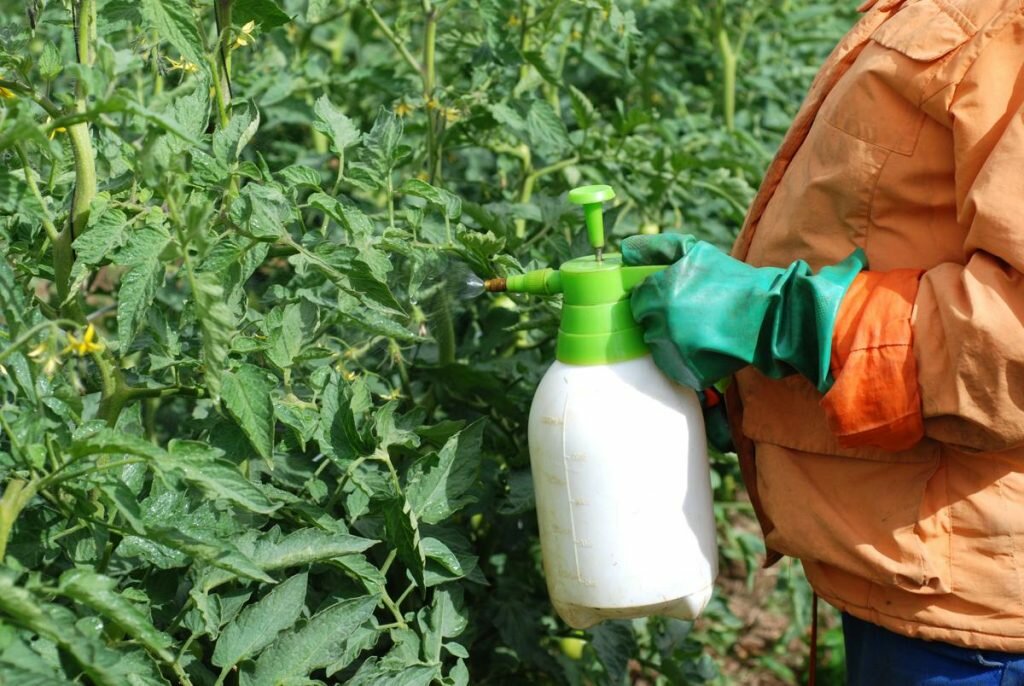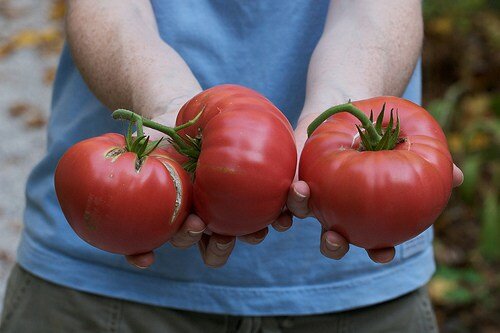The Heirloom Brandywine tomato variety is one of the oldest and most popular tomato varieties grown in America. Although it is widely popular, many people fail to grow this variety simply because they don’t know how to grow Brandywine tomato properly. Therefore, in this post, we will give you the best tips to ensure that your Brandywine tomato crop will not fail.
Brandywine tomatoes come in different colors including red, pink, orange, yellow and even black tomatoes. They are popular because of their huge size, great delicious taste, and pumpkin-like look. They are also sweet, meaty, and juicy which makes them ideal for sandwiches and fresh eating.
These large fleshy fruits are, although being popular, they are not usually available in supermarkets which makes it hard to enjoy them3 Thus, the best option to taste and enjoy the unique flavor of these delicious fruits is to grow them yourself.
Growing Brandywine tomato may be challenging. However, if you follow this guide on how to grow Brandywine tomato, you won’t face any problems and you will have a heavy production. Read it carefully.
1. Seeding or seedling
For growing Brandywine tomato, seeding is better than a seedling. It is preferable that you used seeds. For seeds, it is better that you start indoor. Sow the seeds 1/4 inches deep six weeks before the anticipated transplanting which is normally after the final frost of the spring.
Seeds need warm soil, make sure that your soil is above 65F to ensure that your seeds germinate fast. You should also keep the soil moist, but not soggy while awaiting germination. Once the seeds break through the soil, moderate watering a bit.
If you are going to use a seedling rather than seeds, first of all, you should get healthy ones without any spots or blemishes on the leaves. Plant your seedling outdoor after the final frost when daytime temperature reaches 65F and above. Choose a position where your seedling can receive a full sun. Brandywine tomato just like any other tomato variety needs at least 12 hours of sunlight.
Dig a hole for each seedling you want to plant. Each hole should be two-thirds as deep as the entire plant’s height and twice as wide as the root ball. The space between the holes should be at least 30 inches. Then, pinch off the leaves along the tomato start’s stem, leaving the top 1 to 2 sets of leaves.
Spread a 3- to 6-inch layer of compost over the planting site. Mix the compost into the soil, and rototill it to a depth of 12 inches. Smooth the soil with a rake. Then, spread the seedling roots outward and place it into the hole. Re-fill the hole with soil and water the plant thoroughly.
2. Soil
Set up the site the where you want to plant your tomato, clean it from weeds and other debris before tilling the soil. Mix equal parts of peat moss, vermiculite, and compost, with the soil. Again, water the soil thoroughly.
Brandywine tomato thrives better in well-drained, fertile soil, rich in organic matter. If you want a high yield, use fertile clays and loams. If you want to harvest early use lighter soil that drains and warms quickly. It also slightly prefers acidic soil at a pH of around 6.5.
3. Watering

Brandywine tomatoes need regular watering especially throughout the growing season. You could either moderately water them daily or thoroughly once a week. Careful watering of this variety does not only feed the plants with more water, but it eliminates the chances of many types of parasites that can affect this delicate plant.
Be careful of overwatering, the soil may get soggy and that is harmful to your plants. For the best results, poke the top 2 or 3 inches of the soil and if it is dry then water your plant. Don’t water from above but rather apply the water at the base of the plant, directly to the soil.
4. Fertilizing

Similar to other tomato varieties, the Brandywine tomatoes are heavy feeders. It is advisable that you apply an 18-18-21 nitrogen, phosphorous, potassium water-soluble starter fertilizer to the Brandywine plants. Mix 1 tablespoon of fertilizer with 1 gallon of water. Pour 1 cup of the fertilizer mixture around the plant. Fertilize the tomato plant the same way two additional times, once every 14 days.
When the plant starts flowering, fertilize the Brandywine tomato with a nitrogen fertilizer. Apply a 20-00-00 or similar slow-release fertilizer at a rate of 1 tablespoon per plant. Water the area to activate the fertilizer and reapply the fertilizer every 4 to 6 weeks.
5. Transplanting (only for seeds)
You can start transplanting when the last frost has passed and nighttime temperature is 50F and above. It is better than you wait a week or two after the last frost because cold soil and air temperatures can stress plants. Avoid transplanting the plants that have flowered. Look for sturdy, short, dark green plants.
Plant them deeper than they were in containers. You should also leave a space of at least 20 inches between each plant. To reduce root disease risk, don’t plant on soils that have recently grown tomatoes, potatoes, peppers or eggplant for at least two years
Brandywine tomatoes can be grown next to carrots, onions, chives, garlic, asparagus, roses, and nettle. In fact, Brandywine tomatoes will help to deter parasites and other harmful conditions to the above-mentioned plants. However, avoid planting tomatoes in proximity to any members of the Brassicaceae family.
One more piece of an advice, tomatoes can’t be cultivated in close to corn, potatoes, and fennel herb.
6. Mulching
Mulching is extremely significant as it maintains soil moisture and suppresses weeds. Start mulching after the soil has warmed up. Red plastic, being a reflective mulch, will promote more complete development if light conditions are not ideal.
If you leave in an area where it does not rain more than 1 inch per week, water the plants to make up the difference. Brandywine tomatoes need a consistent supply of moisture.
7. Providing support
Providing support to the plants is also an important factor that contributes to the success of your crop. In fact, providing support improve fruit quality, keep fruit cleaner, and make harvest easier. There are a lot of materials that you could use in providing support to your plants.
Wooden tomato stakes and tomato cages are typical and ideal for Brandywine tomatoes. However, don’t use too long stakes and don’t insert them too deeply because you may harm the roots.
8. Pruning Tomatoes
Pruning tomatoes encourages the growth of new shoots. Pinching off the suckers will lead to pruning tomatoes to one or two vigorous stems. Tie stems to stake with soft string, twine or cloth, forming a figure-8 with the stem in one loop and the stake in the other. This gives the stem room to expand without being constricted.
Pull any weeds growing near the tomato plant each time you water or fertilize the Brandywine tomatoes. Adjust the tomato stems in the cage as they grow, pulling stems bent at unnatural angles through the holes in the cage to straighten them.
9. Pests and diseases
It is widely known that is tomato variety is very delicate. Therefore it is subject to many pests and diseases. The fact that they take so long to ripen makes them more susceptible to pests and diseases than other tomato varieties. Watering at the ground eliminates most of the fungal infections while encouraging plants like Marigolds and the like around the tomato patch can keep many bugs at bay.
Netting is also a great way to protect your plants from birds, bugs, and beetles and it attracts beneficial insects like bees, wasps, It also keeps pollinators and bug eaters out.
10. Harvesting

Harvest your tomatoes when their colors turn into rosy pink or red. They are usually ready for harvesting 90 days after planting. Be careful when harvesting, you should cut the tomatoes off the stem, not the whole stem.
To grow Brandywine tomatoes successfully usually takes an experiences gardeners. However, if you literally follow this guide you will be able to grow them and harvest them without the slightest problem even if you are not an experienced gardener.
This is the ultimate best guide on how to grow Brandywine tomatoes, If you wish to learn more about tomatoes, you can also read about growing tomatoes in raised beds, growing tomatoes in grow bed and growing tomatoes in self-watering containers.
Enjoy growing your tomatoes and if you have any inquiries or question, please comment them and we will be glad to answer you. Don’t forget to tell your friends about us.

